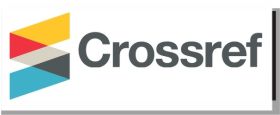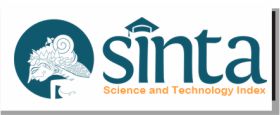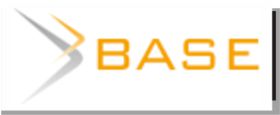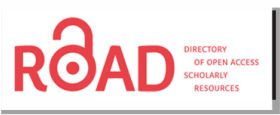Implementasi Aplikasi Cuti-E (Cuti Pegawai Berbasis Sistem Elektronik) Guna Memudahkan Pegawai dalam Pengusulan Hak Cutinya di Lingkungan Sekretariat Jenderal Dewan Perwakilan Daerah Republik Indonesia
Abstract
Keywords
Full Text:
PDFReferences
Anderson, J. E. (2006). Public Policymaking : An Introduction (6th Ed.). Belmont, CA: Wadsworth Thomson Learning.
Anukoonwattaka, W., Romao, P., Bhogal, P., Bentze, T., Lobo, R. S., & Vaishnav, A. (2021). Digital Economy Integration in Asia and the Pacific: Insights from DigiSRII 1.0. Asia-Pacific Sustainable Development Journal, 28(2), 113–148.
Arief, A., & Abbas, M. Y. (2021). Kajian Literatur (Systematic Literature Review): Kendala Penerapan Sistem Pemerintahan Berbasis Elektronik (SPBE). PROtek : Jurnal Ilmiah Teknik Elektro, 8(1), 1–6. https://doi.org/10.33387/protk.v8i1.1978
Creswell, J. W. (2014). Research Design: Qualitative, Quantitative and Mixed Methods Approaches (Fourth Edition) (4 ed.). Thousand Oaks, CA: Sage Publications.
Dye, T. R. (2017). Understanding Public Policy. In Inc, Upper Saddle River, New Jersey, USA. New Jersey: Pearson Prentice Hall.
Edward III, G. C. (1980). Implementing Public Policy. Washington: Congressional Quarterly Inc.
Hamdi, M. (2014). Kebijakan Publik. Bogor: Ghalia Indonesia.
Hayat. (2020). Paradigma Good Governance Menuju Shared Governance Melalui Reformasi Birokrasi dan Inovasi Pelayanan Publik. Aristo (Social, Politic, Humaniora), 8(1), 1. https://doi.org/10.24269/ars.v8i1.2270
Kencono, B. D., Putri, H. H., & Handoko, T. W. (2024). Transformasi Pemerintahan Digital: Tantangan dalam Perkembangan Sistem Pemerintahan Berbasis Elektronik (SPBE) di Indonesia. JIIP - Jurnal Ilmiah Ilmu Pendidikan, 7(2), 1498–1506. https://doi.org/10.54371/jiip.v7i2.3519
Lassance, A. (2022). What is a policy, and what is a government program? A simple question with no clear answer, until now. Revista Simetria do Tribunal de Contas do Município de São Paulo, 1(8), 140–148. https://doi.org/10.61681/revistasimetria.v1i8.110
Lasswell, H. (1960). The Structure and Function of Communication in Society. Chicago: University of Illinois Press.
Maulana, A., Aryaputri, H., & Rosyari, F. R. (2020). Application of E-Goverment System As An Effort to Create A Conducive Investment Climate in Banyuwangi Regency. NATAPRAJA : Kajian Ilmu Administrasi Negara, 08(2), 106–119. https://doi.org/10.21831/jnp.v8i2.34023
Miles, M. B., Huberman, A. M., & Saldana, J. (2014). Qualitative Data Analysis: A Methods Sourcebook [Edition 3] (Terjemahan). Thousand Oaks, CA: Sage Publications.
Purba, N., Yahya, M., & Nurbaiti. (2021). Revolusi Industri 4.0 : Peran Teknologi Dalam Eksistensi Penguasaan Bisnis Dan Implementasinya. Jurnal Perilaku Dan Strategi Bisnis, 9(2), 91–98. https://ejurnal.mercubuana-yogya.ac.id/index.php/JPSB/article/view/2103
Purwati, N., Fadhlurrahman, O. R., Iswahyuni, D., Kiswati, S., & Faqih, H. (2023). Sistem Informasi Cuti Karyawan Menggunakan Berbasis Web dengan Metode Rapid Application Development (RAD). Infomatek: Jurnal Informatika, Manajemen dan Teknologi, 25(1), 61–68. https://doi.org/10.23969/infomatek.v25i1.7822
Rahman, A. A., Amir, M., & Tawai, A. (2021). Reformasi Birokrasi Melalui Penataan Kelembagaan Pada Sekretariat Daerah Kota Kendari. Publica: Jurnal Administrasi Pembangunan dan Kebijakan Publik, 12(1), 51–59. https://doi.org/10.33772/publica.v12i1.14784
Rozikin, M., Rohman, A., & Samudra, A. D. (2023). Efektivitas Layanan Cuti Online (La-Cuti) Sebagai Respon Pelayanan Cuti Pegawai Berbasis Digital. REFORMASI: Jurnal Ilmiah Ilmu Sosial dan Ilmu Politik, 13(2), 327–339.
Rusdy, R. M. I. R., & Flambonita, S. (2023). Penerapan Sistem Pemerintahan Berbasis Elektronik (SPBE) di Pemerintah Daerah Untuk Mewujudkan Good Governance. Lex LATA: Jurnal Ilmiah Hukum, 5(2), 218–239. https://doi.org/10.28946/lexl.v5i2.2351
Situmorang, C. H. (2016). Kebijakan Publik (Teori Analisis, Implementasi dan Evaluasi Kebijakan). Depok: Social Security Institue.
Subianto, A. (2020). Kebijakan Publik. Surabaya: Brilliant.
Sugiyono. (2017). Methods of Quantitative, Qualitative and Combination Writing (mixed methods). Bandung: Alfabeta Press.
The United Nations. (2022). 2022 E-Government Development Index. 2022. https://publicadministration.un.org/egovkb/en-us/Data-Center
The World Bank. (2020). Individuals Using the Internet (% of Population). https://data.worldbank.org/indicator/IT.NET.USER.ZS?name_desc=false
Wahab, S. A. (2010). Analisis Kebijakan: Dari Formulasi ke Penyusunan Model-Model Implementasi Kebijakan Publik. Bumi Aksara. https://books.google.com/books?hl=en&lr=&id=mHorEAAAQBAJ&oi=fnd&pg=PA11&dq=kebijakan+publik&ots=O6_b2-vZD5&sig=Mavz0x_sjz90mBi7v3CFAtuTgU0
World Bank Group. (2019). The Digital Economy in Southeast Asia : Strengthening the Foundations for Future Growth. https://openknowledge.worldbank.org/handle/10986/31803
DOI: https://doi.org/10.31334/reformasi.v12i1.4688
Refbacks
- There are currently no refbacks.
Copyright (c) 2025 Jurnal Reformasi Administrasi : Jurnal Ilmiah untuk Mewujudkan Masyarakat Madani

This work is licensed under a Creative Commons Attribution-ShareAlike 4.0 International License.
View My Stats
JURNAL REFORMASI ADMINISTRASI
Jurnal Ilmiah Untuk Mewujudkan Masyarakat Madani
ISSN : 2355-309X (Cetak), 2622-8696 (media online)
Email : [email protected] / [email protected]
Website: http://ojs.stiami.ac.id/index.php/reformasi/index
INDEXED BY :














